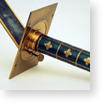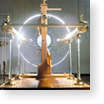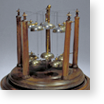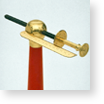Spectacular effects were typical of many aspects of 18th-century science. The high society of the time, avid for innovation and entertainment, was fascinated by the phenomena of experimental physics. In salons and courts - such as the one we see replicated at the back of the room - the laws of nature were illustrated by travelling lecturers who taught science through spectacular demonstrations. Using air pumps, planetariums, solar microscopes and machines for studying impact, they offered courses in physics that avoided the abstruse language of mathematics. Their lectures, often staged like theatrical performances, were real social events. Over the course of the century, the newly invented electrostatic "rubbing" machines were used in amusing "electric soirées," where the demonstrators staged spectacular performances based on attraction, repulsion, shocks and sparks experienced by the ladies and gentlemen on their own bodies.
The Spectacle of Light
Numerous devices were used in darkened rooms to enchant the guests by generating curious phenomena of light - Isaac Newton's (1642-1727) famous prism experiment ...
(16 objects)
Large machines
The spectacular impact of experimental demonstrations was also due to the physical quality of the instruments, as illustrated by these large machines. ...
(17 objects)
Science in the salon
Eighteenth-century salons were often the theater of glittering "electrical evenings" in which ladies and gentlemen amused themselves by experimenting—even ...
(16 objects)
Attractions
In the 18th century the ambiguous term "attraction," taken from the vocabulary of alchemy, was employed in various fields, such as astronomy, electricity ...













